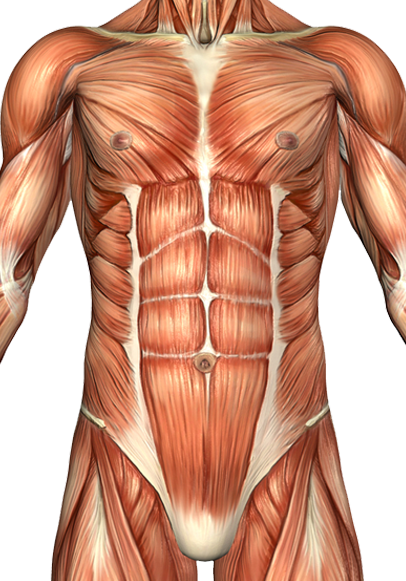Rectus Abdominis Muscle
Rectus abdominis is a long and vertical muscle of the front of abdomen. It is named so due to its vertical orientation as rectus means straight. There is a pair of rectus abdominis muscles that lie close to each other and are separated in midline by the linea alba. It is broad and thin in the upper end and is thick and narrow inferiorly. It is also known as ‘abs muscles or abs”. Most of this muscle is enclosed within the rectus sheath. It is linked to the rectus sheath by two or more tendinous intersections.
read more
Rectus Abdominis Muscle
ORIGIN AND INSERTION
It originates from pubic crest and pubic symphysis and is inserted into the 5th-7th costal cartilages and xiphoid process of sternum.
NERVE SUPPLY
Rectus abdominis muscle is innervated by the thoracoabdominal nerves, the anterior rami of the T6-T12 spinal nerves. The nerves pierce the rectus sheath to reach the muscle.
BLOOD SUPPLY
It receives its blood supply from superior and inferior epigastric arteries. It also gets arterial supply from the superficial epigastric artery. In addition to these arterial sources, the rectus abdominis muscle also receives blood supply from the segmental intercostals arteries.
FUNCTIONS
-
It causes the flexion of lumbar vertebrae, flexing the trunk.
-
It compresses the abdominal viscera and thus assists in expiration.
-
It controls pelvic tilt and stabilizes it.
-
It is a one of important postural muscles.
-
It raises the intra-abdominal pressure, thus helping to keep abdominal viscera in place.
-
It also plays role in lifting heavy weights and child delivery.
Report Error



